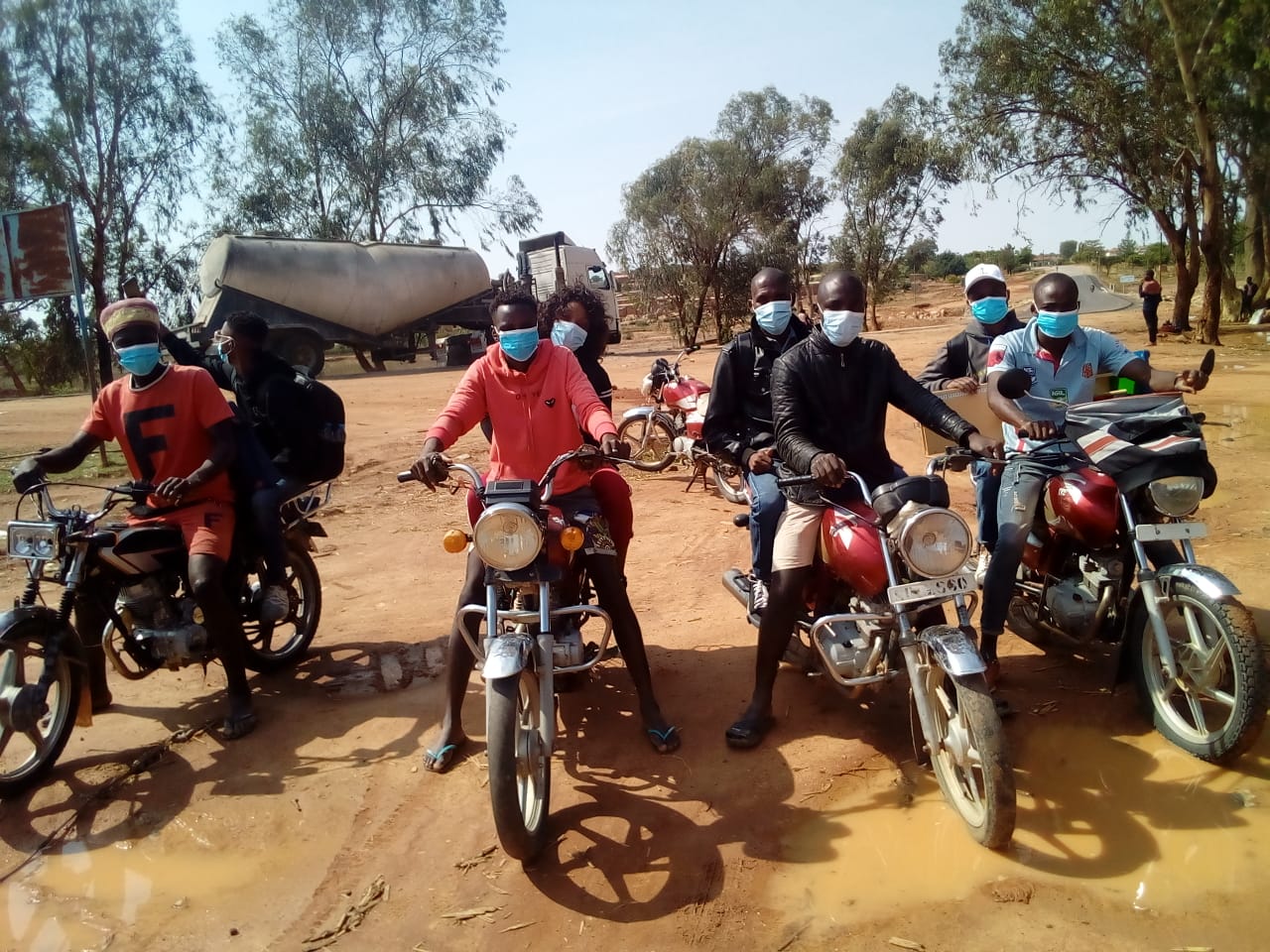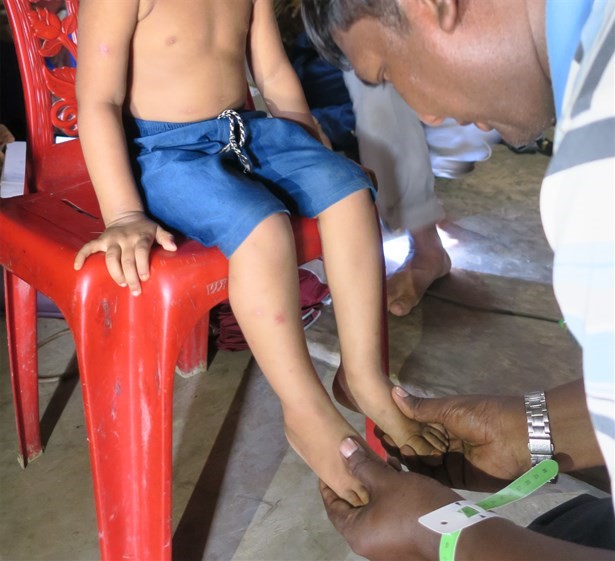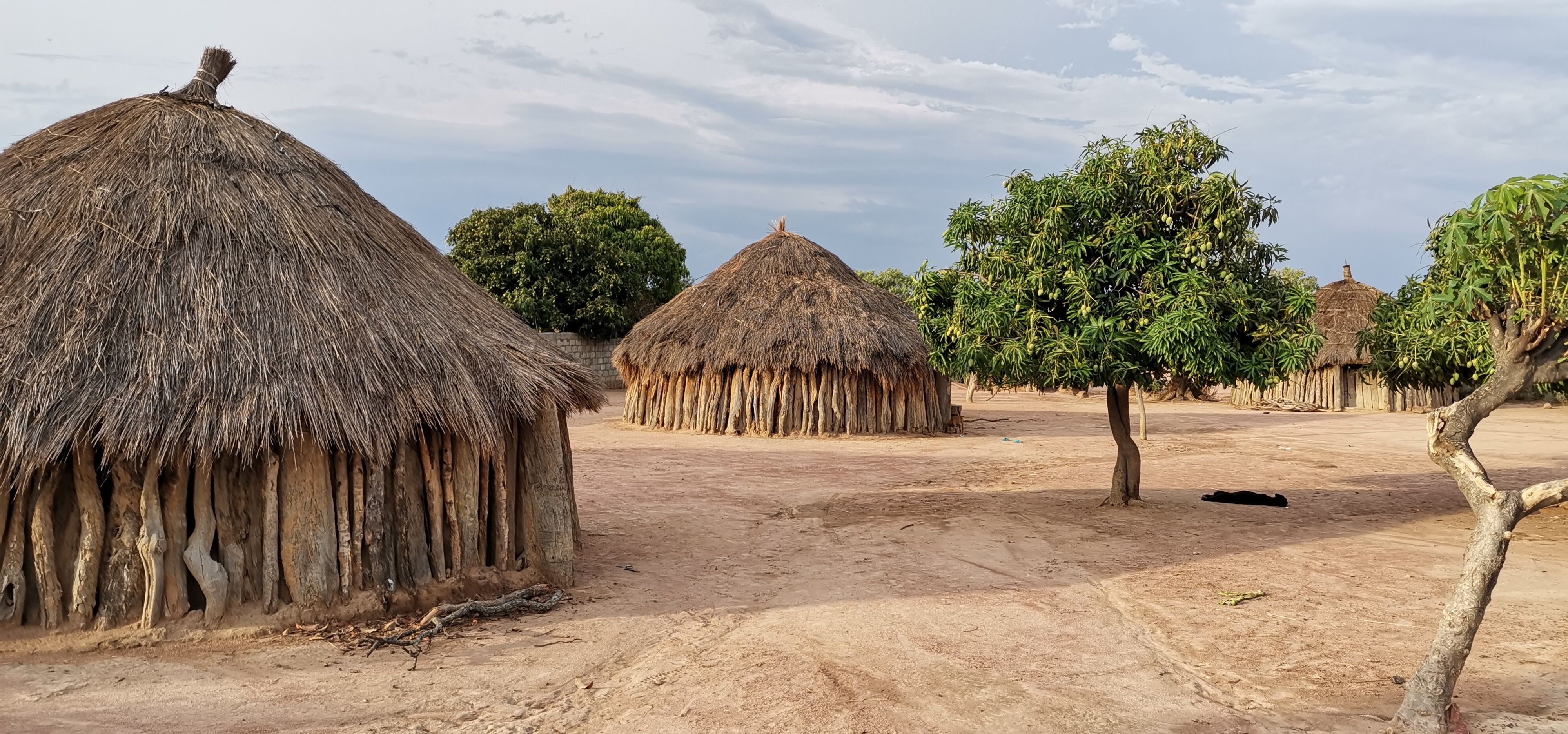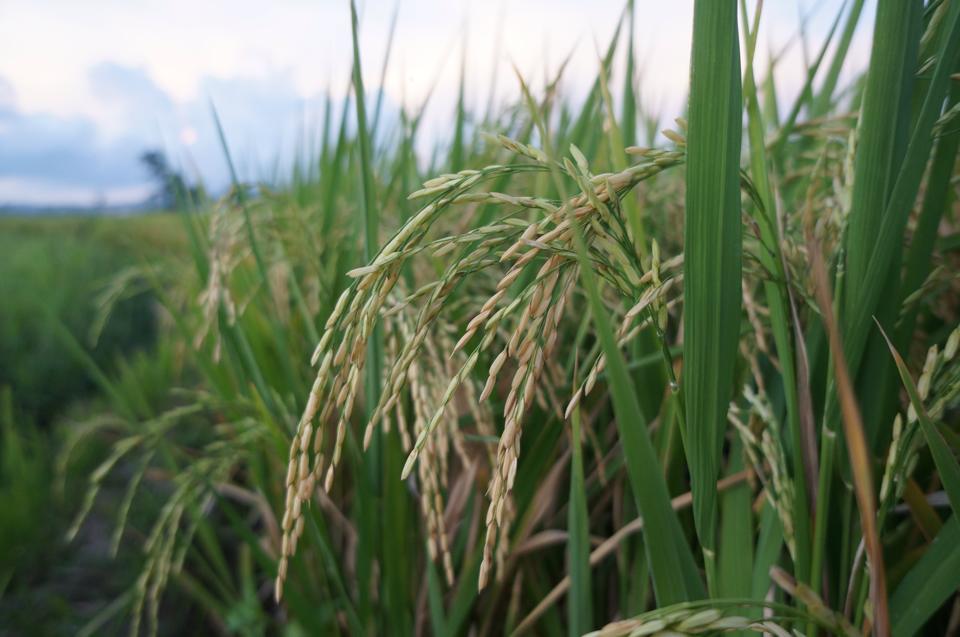No child faces: Examining the use of child images from nutrition assessments
Alexandra Humphreys is a Humanitarian Nutritionist with eight years of nutrition assessment experience in fragile contexts.
Grace Heymsfield is a Registered Dietitian Nutritionist with eight years of nutrition assessment and research experience.
Positionality1 statement: The authors acknowledge that we are white females in our 30s, born and raised in middle-class families in the United States. We are able-bodied, neurotypical, and hold Master’s degrees. These factors provide elements of privilege, bias, and blind spots that limit us when speaking about people with lived experiences different to our own.
We are publishing this article independently, without affiliation, and any views expressed do not necessarily reflect the views of affiliate organisations. We thank Martha Nakakande and Sarah King for their insightful feedback, suggestions, and review.
What we know: The use of images of children, whether distressed or smiling, is standard practice in the humanitarian sector. In the worst cases, such photos are used by non-profits and charity organisations to gain sympathy and contributions from donors by showing exploitative imagery of people living in destitute conditions.
What this adds: This article is a critical examination of child images used in nutrition assessments based on the experience of the authors. We ask the reader, and ourselves, to think of images of minors as a form of sensitive data and question the conditions under which these images are extracted.
Naming the problem
The use of child images, particularly in the humanitarian sector, is problematic. In the worst cases, child images are used by nonprofits and charity organisations to gain sympathy and donations by showing exploitative imagery of people living in destitute conditions - referred to as 'poverty porn'.2 More ubiquitously, pictures of identifiable minors in humanitarian contexts continue to be relied on for internal communications, fundraising campaigns, technical guidelines, articles, case studies, grey literature, and donor reports. This is despite existing guidelines and the sector espousing a central 'Do no harm' principle.
Unhealthy power dynamics, often in the form of 'saviourism' (Box 1), are at the root of colonialism and current global health practice. The 'White Man's Burden', a term used mainly in the 19th century, expressed the idea that European countries had a duty to control countries and entities in parts of the world with less money, education, or technology (Kipling, 1899).
Box 1: What is 'White Saviourism'?'White Saviourism' describes a situation in which a white character or person is portrayed as rescuing a racially minoritised or Indigenous person from destitution without any mention of the role played by the white racial group in creating and sustaining the oppressive environment responsible for that destitution (Koum et al, 2022). Writer and historian Teju Cole coined the term 'White Saviour Industrial Complex' to describe the pattern of white people seeking personal catharsis by attempting to liberate, rescue, or save people of colour (Cole, 2012). The 'White Saviour Industrial Complex' is not about justice: it is about having a big emotional experience that validates privilege" |
Perpetuating inaccurate narratives
Depictions of saviourism are perpetuated through imagery today. Pictures that emerge from humanitarian projects too often centre on the work of foreign actors and fail to portray communities outside of their recipient or 'beneficiary' status. In 2005, Dorrie Chetty, Senior Lecturer at Westminster University, wrote specifically about the lack of varied representation in Field Exchange and how images in humanitarian publications support neo-colonial and 'otherness' narratives (Chetty, 2005).
The images we share are therefore detached from the contextual and cultural facets that would support an authentic depiction, rendering members of the local community as props and risking the perpetuation of harmful narratives (Aubel & Chibanda, 2022).
Author Binyavanga Wainaina (2005) challenged us to confront harmful narratives, such as the notion that Africa is a homogenous 'country' of tall, thin people who are starving - in his satirical article 'How to Write about Africa'. Further, research has demonstrated that viewers of negative portrayals of those in poverty were more likely to rate people in poverty lower on measures of agency (Clough et al, 2023).
The portrayal of Ukrainians by global media outlets - as being 'civilised' or 'just like us' rather than destitute - has coincided with the diverting of attention, resources, and expertise from other emergencies to the Ukraine aid response (Shah, 2023). Meanwhile images of sick and malnourished children continue to be central to fundraising campaigns for underfunded responses in the Horn of Africa, Central Asia, and elsewhere.
Risk to the individual
Policies and practices around consent for taking images during household data collection vary widely between organisations and the individuals within them. Consent may be verbal, if the photographer and subject speak the same language - but often they do not. Consent may be written, if a form is available in the language of the subject - but often it is not. Consent may be implied, through the assumption that the subject won't mind.
Subjects rarely see the photos that are taken of them, rarely know how and where the images will be used, and are unlikely to be able to inform how their image is described, contextualised, or disseminated, especially as the rise of social media has allowed images to be shared more swiftly and with a broader audience (Duroch and L'Homme, 2022). Further, given the inherent power dynamics between humanitarian actors and the recipients of aid, it is difficult to ascertain if consent is freely given or underpinned by a fear of services or resources being denied.
Protection policies are sometimes in place for de-identifying datasets (removing names and other sensitive information so it cannot be leaked from internal databases). Meanwhile, imagery from these same humanitarian contexts often clearly show the identifiable faces of children - the community members considered to be the most vulnerable. Even where names of children are recorded for ease of distinguishing family members within the household during data collection, nutrition datasets are routinely anonymised in compliance with data protection policies after collection has taken place. We have yet to see these policies in place for children's faces. Institutional Review Board approval of assessment protocols, including child protection modules, is not standard practice.
Further, as Chetty (2005) reminds us, a consideration that is often neglected in a discussion of visual representations is the wider impact they may have upon the subjects used in the photographs, who could theoretically see themselves or their children in print or online or be identified by members of their family or community. As malnutrition is a demonstrated stigmatised condition in many contexts, it is essential that personal risk to the individual drives protection policies (Bliss et al, 2016).
Because of our positionalities, we have not had to wonder if images of us as children were publicly available as part of humanitarian campaigns.
Our complicity as survey managers
As survey managers we have personally contributed to this dynamic by taking many photos of identifiable young children, rarely with more than verbal consent from a guardian. Once taken, these photos were stored on personal devices and their uses ranged from more formal reports or agency newsletters to personal communications and sharing on social media. We have taken countless photos, selecting the most compelling or endearing to share with friends and family as a depiction of our work and choosing the most technically accurate with perfectly positioned logos for the covers of survey reports and presentations. In both cases we repeatedly sought and received positive feedback for our visual depictions of 'the field'.
In the process of writing this article, we each re-evaluated our child image footprint across our personal social media accounts. We both noted a stark discrepancy between the number of pictures we posted of children from fragile contexts and those we had posted of the children of our friends and peers. This suggests that we felt a unique right to share images of children experiencing poverty and malnutrition.
A better way forward
To (attempt to) counteract harmful narratives, the Pledge for Change3 is an initiative developed and driven by 'Global South' actors that re-imagines the role of international actors in the global humanitarian and development aid system. The aim is to build a stronger aid ecosystem based on the principles of solidarity, humility, self-determination, and equality by focusing on three core changes. One of these is centred around authentic storytelling:
"Some of the stories we tell and the pictures that illustrate them have reinforced harmful stereotypes. This kind of storytelling, sometimes associated with the 'white gaze',4 distorts reality, and should be eradicated from our internal and external communications."
Considering our experiences and with a desire to contribute to authentic storytelling and reducing risk, we propose three strategies for generating more appropriate yet meaningful photos during data collection in humanitarian settings.
Strategy 1: Shift the emphasis to the work of survey teams
Surveys in humanitarian contexts are complex feats of operational gymnastics, technical savvy, and community engagement. There's no limit to the photo opportunities of staff doing difficult jobs well that do not require the presence of a child or other community member. We can shift to images focusing on our local teams and their impressive efforts to collect data. As an example, the two pictures shown in Figure 1 portray survey teams at work.
Figure 1: Examples of using survey teams rather than images of children to illustrate reports

© Armindo Sambambi

© Paul Sahr Johnson
Strategy 2: Use technical photos in which children are not identifiable
Collecting anthropometric measurements is a key activity when conducting population-representative nutrition assessments. Photographs of this process can be taken in a manner that does not risk the anonymity of the children being photographed (Figure 2). Images of measuring mid-upper arm circumference only require a photo of a child's arm or torso, while testing for bilateral oedema can be accomplished with a photo of a child's feet. The measurement of weight or height can be photographed over the child's shoulder or from another angle that obscures the face.
Figure 2: Examples of ways to anonymise pictures of anthropometric measurements

© Alexandra Humphreys

© Alexandra Humphreys
Strategy 3: Storytelling through contextual photos
Survey reports are often read by audiences who have never visited the surveyed area. Photos depicting the context can portray details such as terrain, vegetation, livestock, food staples, styles of housing, and infrastructure. Such contextual photos can make reports more vivid to the reader without risking the anonymity of children in the community, as shown in Figure 3.
Figure 3: Examples of pictures focusing on the context of the survey area

© Alexandra Humphreys

© Alexandra Humphreys
Conclusion
In this article we have looked critically at our complicity in the use of images of minors in our work and provided some suggestions for a better way forward for surveys in humanitarian settings. According to the 'Do no harm' principle, humanitarian actors must mitigate any negative impact of their actions on affected populations. Although a widely held principle, in reality we as white people often cause harm. Our goal should be to mitigate harm and be held accountable for that which we cause. As, ultimately, the results of surveys and their impact rely on findings in the form of data (not imagery), we have a clear opportunity to shift the expectation away from identifiable photos of children and towards other meaningful and more ethical imagery.
We presented three alternative strategies for generating imagery during household data collection in humanitarian settings through the use of photos that focus on the work of survey teams, using photos that are technical in nature without showing the faces of children, as well as contextual imagery. Other opportunities to tell authentic stories while protecting anonymity may include technical or artistic drawings and blurred, pixelated, or stylised photos6. The opportunities for changing how we portray humanitarian contexts may only be as limited as our lack of willingness to challenge unhealthy power dynamics and tap into our creativity.
We invite you to join us in examining the power of imagery and how best to use it in your work regardless of your role or sector.
For more information, please contact Grace Heymsfield at gheymsfi@gmail.com and Alexandra Humphreys at Humphreys.alexandra@gmail.com
A note from the editorial team
Field exchange supports the view of the authors in that the use of child images is a contentious issue within the humanitarian sector and we can all do better in this regard. Images of children and affected populations are sometimes used, not from the desire to gain funding or impose 'saviourism', but to try and humanise stories and reflect that there is a human and personal tragedy at the core of every emergency. We recognise however that, as a publication that seeks to highlight learning from emergencies and high burden contexts, we use images that may perpetuate a neo-colonialist attitude - with all its associated power imbalances. This issue has been well recognised. Images that have featured in the past may not be suitable under contemporary standards. Going forward we are constantly working to improve our practice with every issue.
It should be acknowledged that some progress has been made regarding the use of imagery in humanitarian contexts. As one example, BOND7 developed guidelines for the collection and use of content that built off previous guides in 2007 and 2014, and a subsequent review in 2018. This highlights that the topic is now being engaged with, although questions remain regarding the implementation of such guidance.
We thank the authors for submitting these important views, allowing us to look critically at the work that we do and the role that we can play in driving positive change in the sector and beyond.
References
Aubel J & Chibanda D (2022) The neglect of culture in global health research and practice. BMJ Global Health, 7, e009914.
Bliss JR, Njenga M, Stoltzfus RJ et al. (2016) Stigma as a barrier to treatment for child acute malnutrition in Marsabit County, Kenya. Maternal & Child Nutrition, 12, 1, 125-38.
Chetty D (2005). Neo-Colonialism and 'Otherness': Representational Issues in Field Exchange. Field Exchange 26.
Clough E, Hardacre J & Muggleton E (2023) Poverty Porn and Perceptions of Agency: An Experimental Assessment. Political Studies Review.
Cole T (2012) The white-savior industrial complex. The Atlantic.
Duroch F & L'Homme M (2022) Ethical considerations around the use of humanitarian imagery. Alternatives Humanitaires, 21. alternatives-humanitaires.org.
Kipling R (1899) The White Man's Burden: The United States & The Philippine Islands, 1899. McClure's Magazine.
Koum B, Clarke A, Kebede MA, et al (2022) Introduction to decoloniality and anti-racism in global health: Student Toolkit. researchonline.lshtm.ac.uk.
Shah R (2023) Race and erasure: Why the world's other humanitarian crises don't see the same response as Ukraine. theconversation.com.
Wainaina B (2005). How to write about Africa. granta.com.
1 Positionality refers to the personal values, views, and location in time and space that influence how one engages with and understands the world and is influenced by power and power dynamics. This definition is adapted from The Encyclopedia of Geography and included in a set of resources from the Anti-Racist Teaching & Learning Collective. See https://antiracistteaching.org/
2 https://edition.cnn.com/2016/12/08/health/poverty-porn-danger-feat/index.html
3 https://pledgeforchange2030.org/
4 The 'white gaze' is a term popularised by writer Toni Morrison, on the assumption that the default reader or observer of a piece of media is white, affecting the way that people of colour are depicted. https://www.youtube.com/watch?v=oP_-m7V58_I
5 This photo was originally circulated with the child's full face but could be easily cropped so the child's face is no longer identifiable.


